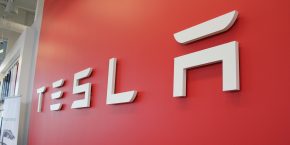
While there’s still room to improve Li-Ion battery cells, most people in the industry believe that solid-state batteries are going to be the next generation of preferred chemistry.
Now Tesla’s battery research partners have unveiled a path to more energy-dense Li-ion cells that could shift research away from solid-state.
The research was presented in a new paper published in Nature scientific magazine by Jeff Dahn’s research team at Dalhousie University, Tesla Canada’s R&D group, and the University of Waterloo.
Dahn is considered a pioneer in Li-ion battery cells. He has been working on the Li-ion batteries pretty much since they were invented. He is credited for helping increase the life cycle of the cells, which helped their commercialization.
His work now focuses mainly on a potential increase in energy density and durability, while also decreasing the cost.
In 2016, Dahn transitioned his research group from their 20-year research agreement with 3M to a new association with Tesla under the newly formed ‘NSERC/Tesla Canada Industrial Research’.
Through the agreement, Tesla invested in a new research lab close to Dahn’s group near Halifax, Nova Scotia.
Over the last few years, we have been reporting on the research that they have been conducting together, including filing patents on battery technology for Tesla. Recently, we reported on a new patent that could help prevent cell failure in Tesla vehicles.
Now the group’s new paper is based around the findings from a new “anode-free lithium-metal pouch cells with a dual-salt LiDFOB/LiBF4 liquid electrolyte.”
Here’s the abstract:
“Cells with lithium-metal anodes are viewed as the most viable future technology, with higher energy density than existing lithium-ion batteries. Many researchers believe that for lithium-metal cells, the typical liquid electrolyte used in lithium-ion batteries must be replaced with a solid-state electrolyte to maintain the flat, dendrite-free lithium morphologies necessary for long-term stable cycling. Here, we show that anode-free lithium-metal pouch cells with a dual-salt LiDFOB/LiBF4 liquid electrolyte have 80% capacity remaining after 90 charge–discharge cycles, which is the longest life demonstrated to date for cells with zero excess lithium. The liquid electrolyte enables smooth dendrite-free lithium morphology comprised of densely packed columns even after 50 charge–discharge cycles. NMR measurements reveal that the electrolyte salts responsible for the excellent lithium morphology are slowly consumed during cycling.”
If successful, it would result in the commercialization of more energy-dense and long-lasting cells on a much quicker timeline than what is believed achievable with solid-state batteries:
“Another potential path to enable the lithium-metal anode is the use of solid-state electrolytes, which is regarded by many as the most viable way forward. However, solid-state electrolytes have not been successful in completely eliminating dendrites, and it is unclear how compatible these technologies will be with existing lithium-ion manufacturing infrastructure, in which billions of dollars have been invested. If liquid electrolytes can be used to create safe, long-life lithium-metal cells, then existing manufacturing equipment can be used to rapidly commercialize high-energy-density cells.”
With the prototype cells proving successful so far, the team believes that “continued success may ultimately shift the focus for enabling lithium-metal batteries from solid-state electrolytes back towards all-liquid electrolytes.”
FTC: We use income earning auto affiliate links. More.



Comments